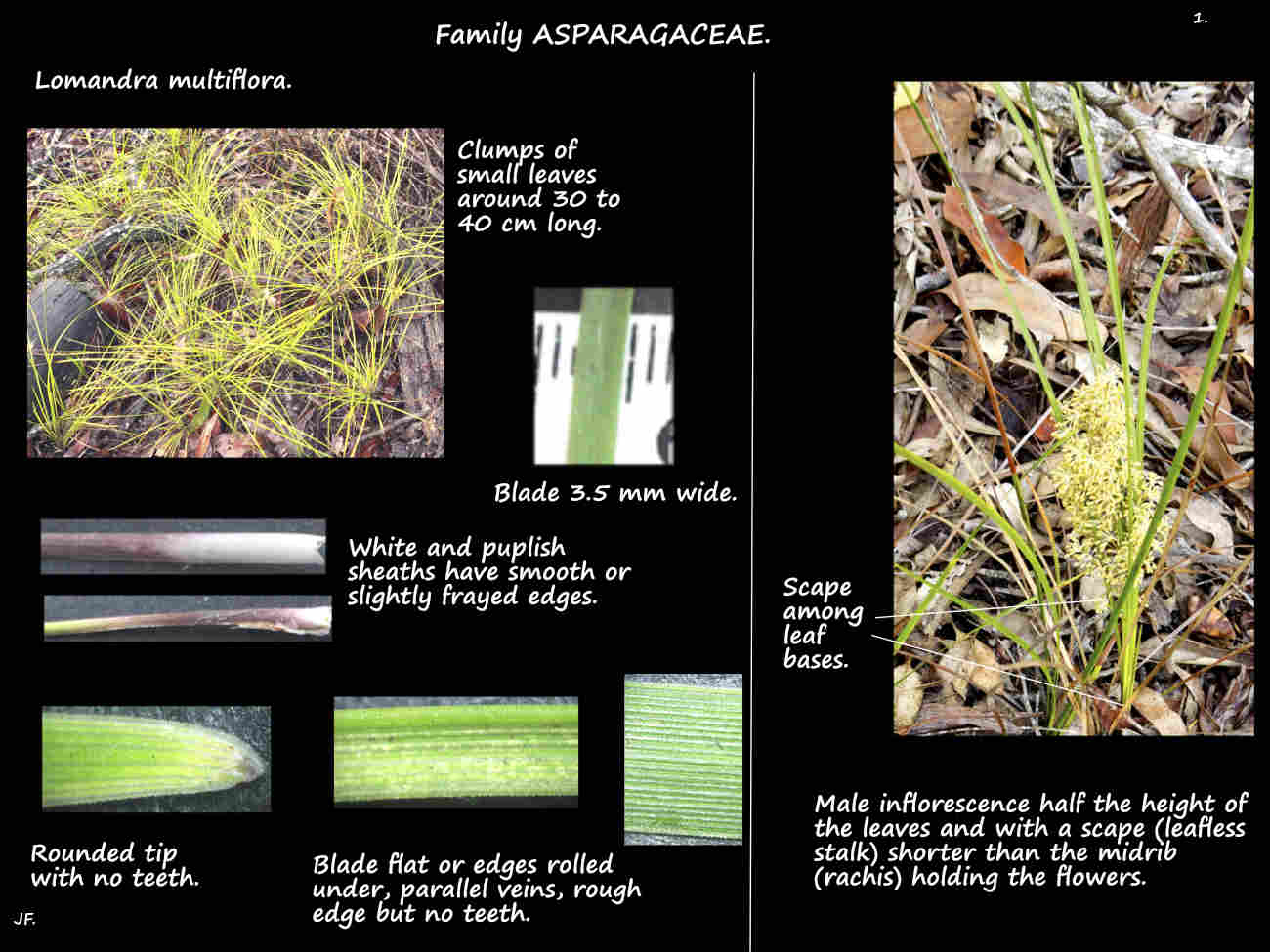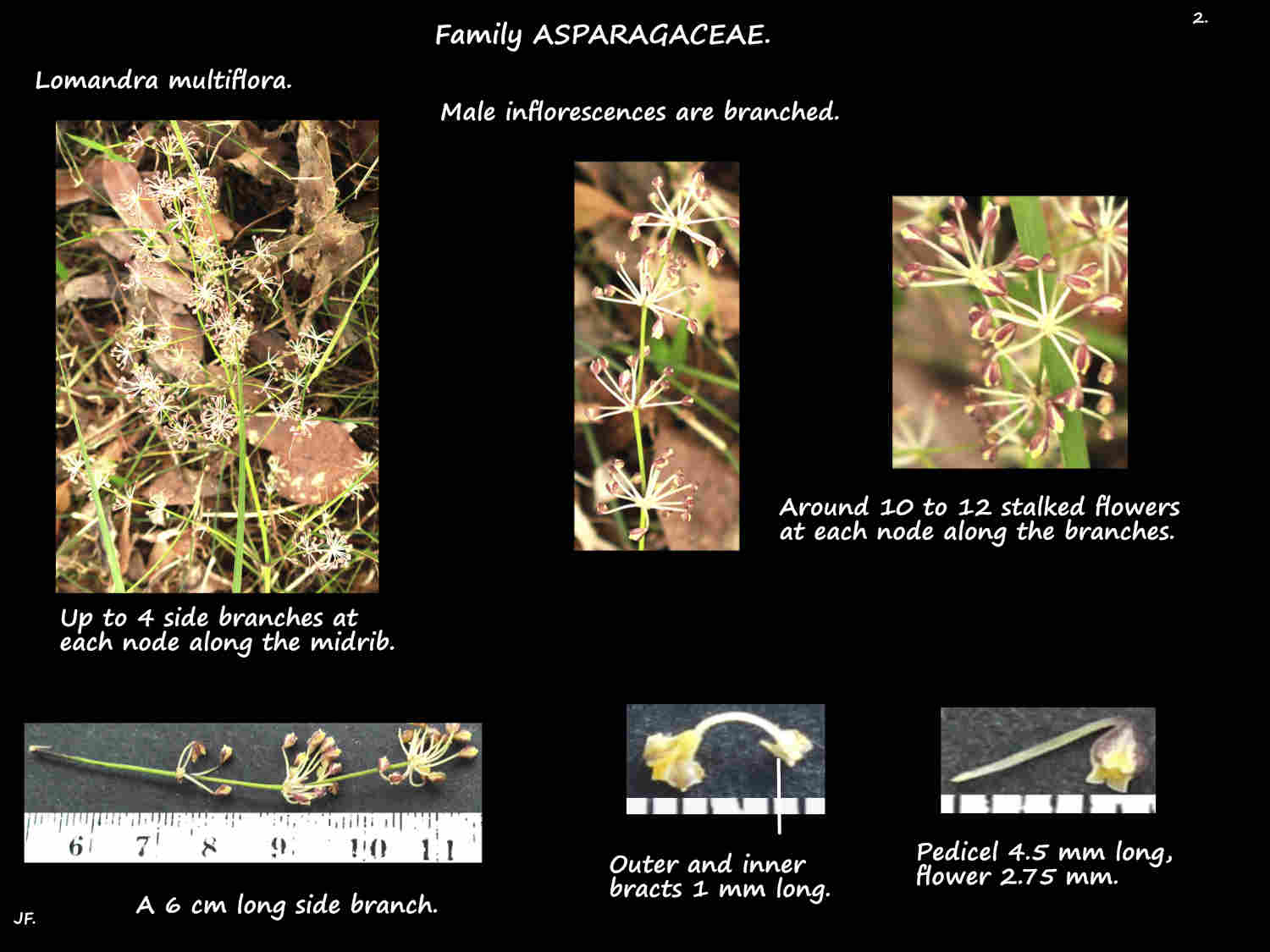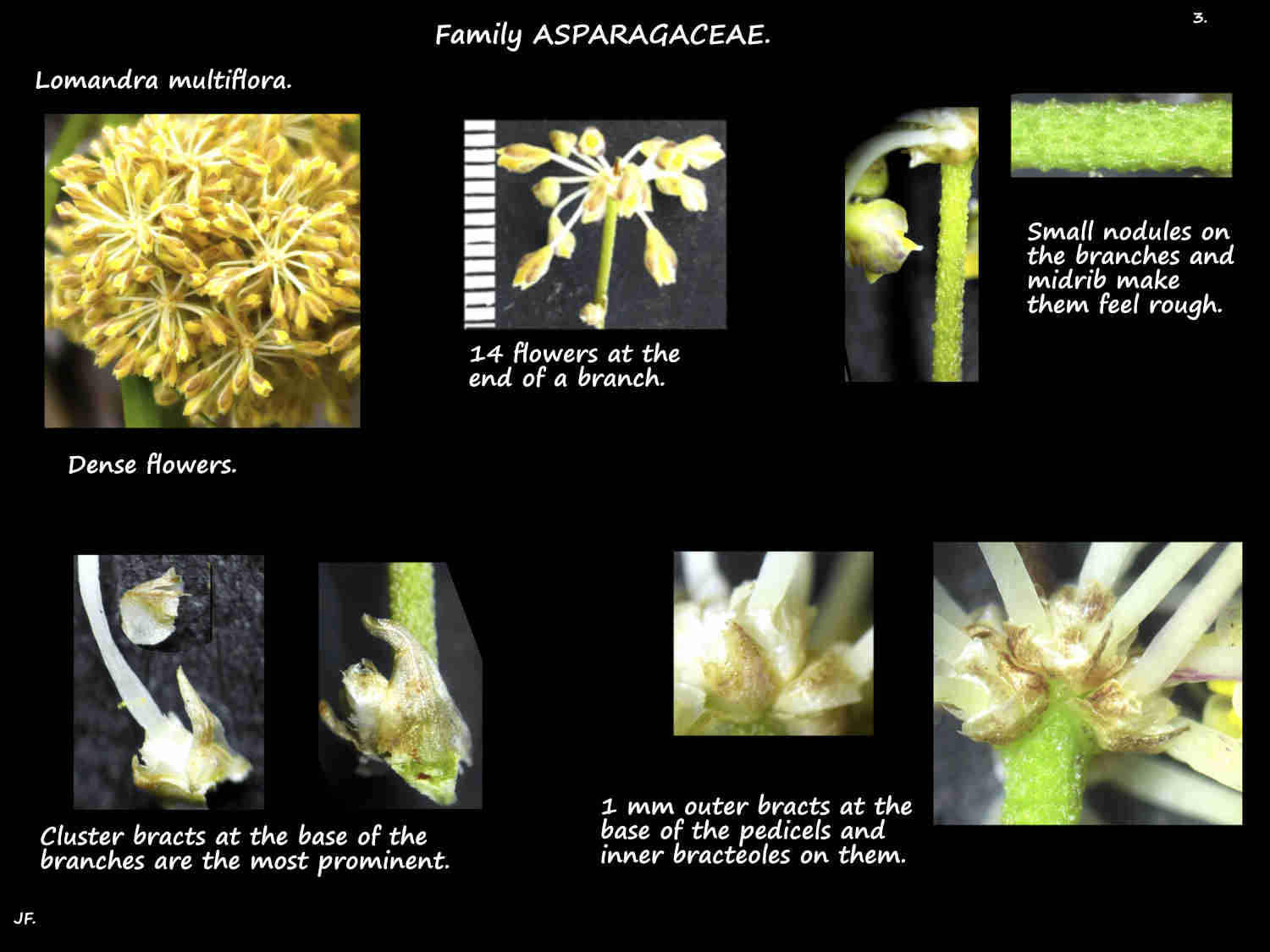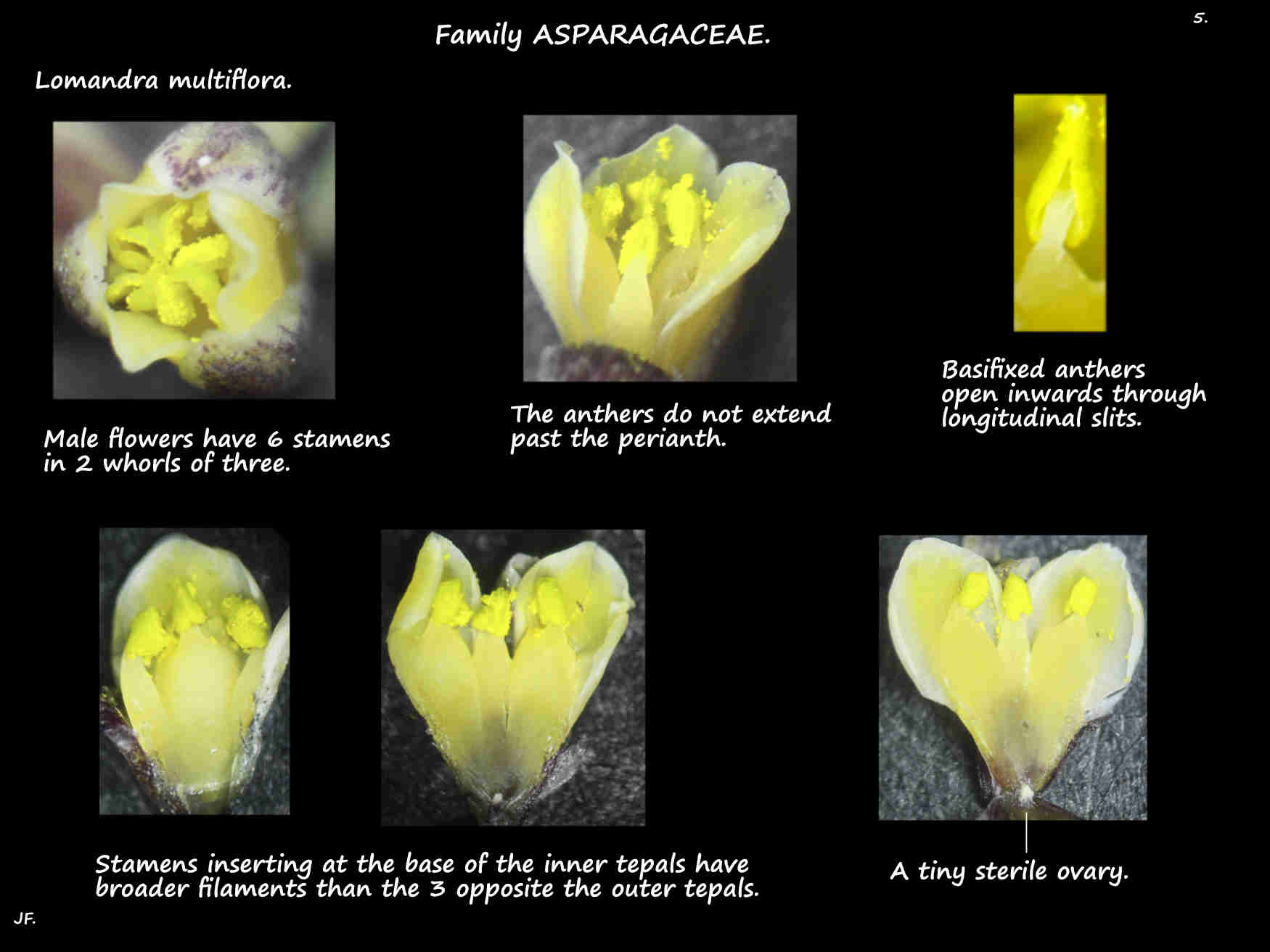Lomandra multiflora.
Native to Australia the Many-flowered Mat-rush is present in Queensland.
They are perennial plants with rhizomes (underground stems).
New plants grow along the rhizomes leading to the formation of small clumps.
The strap-like leaves are around 30 to 60 (25 to 90) cm long and 2 to 4 mm wide.
The blade can be flat or semi-circular as the edges roll under.
The round (pointed) tip has no teeth and the edges are slightly rough but have no definite teeth.
The white, brown or purplish basal sheath has smooth or very slightly frayed edges.
Inflorescences are on a leafless stalk or scape that is shorter than the flower-bearing midrib or rachis.
The unisexual flowers are on separate plants.
The pointed cluster bracts at the base of the inflorescence may be obvious.
Those at the base of any branches are usually smaller than the flowers.
Where there is a pedicel (flower stalk) the outer bract is at its base and the inner bract (bracteole) is on it.
With no pedicel they are both immediately under the flower.
Flowers have 3 purplish outer tepals and 3 yellow inner ones.
Male inflorescences, shorter than the leaves are almost always branched.
The whorls of branches, up to 5 or 6 cm long hold clusters of flowers along them.
The flowers are on pedicels up to 12 mm long with bracts as above.
The purplish outer and yellow inner tepals are around 3 mm long.
There are 6 fertile stamens and a rudimentary ovary.
The unbranched female inflorescences around 30 cm high are shorter than the males.
The clusters of flowers are arranged in whorls around the midrib.
Flowers, with no pedicel are around 4 mm long with yellow and purplish tepals.
The ovary has 3 locules and a style with 3 stigmas.
There are 6 very small infertile staminodes.
The fruit are spherical or 3-angled loculicidal capsules around 6 mm long with wrinkles.
Usually only 1 of the 3 ovules develops into a dark wrinkled seed.
J.F.







